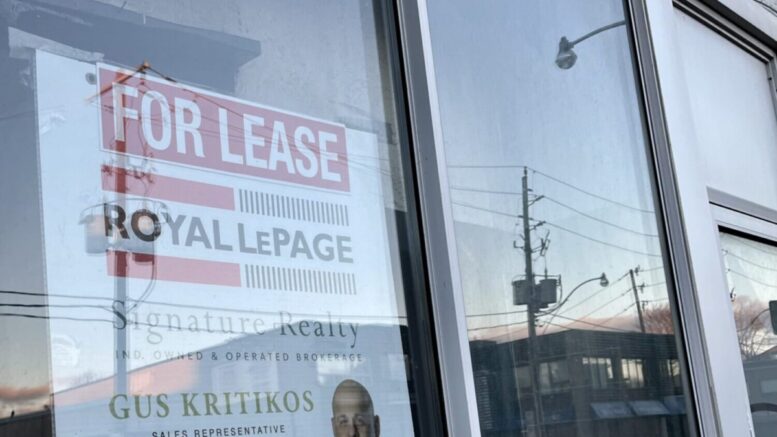With costs throughout the Greater Toronto Area increasing, residents are concerned with how to make ends meet with a seemingly never-ending list of growing expenses.
Some of the most volatile areas affecting people’s budgets in the east end include housing, food, fuel, clothing, entertainment and business costs.
The top issue many are worried about is housing. With high demand but low supply, especially for lower-cost options, prices have skyrocketed.
Local councillor Brad Bradford says he’s heard about this issue the most.
“Constituents have been very clear about their concerns over housing in Beaches–East York,” he said.
He’s heard from “parents with young adult children that are looking to move out but can’t afford to; first-time home buyers that are being priced out of the communities they grew up in; older folks that want to age downsize in the area but can’t find suitable housing options; or people who just simply want an affordable rental unit to call home,” Bradford said in a an email.
Purchasing or renting? Both are costly
For low-income people, the rental market is essential to provide a place to live. But as the price of purchasing housing goes up, so does the price of renting.
“On the rental side, rental rates have been increasing dramatically over the last six months,” said David Amborski, an urban development professor at Toronto Metropolitan University (TMU). “They fell for a while during COVID, but they’ve bounced back, and they’ve actually got to the pre-COVID level and have increased since then.”
Another factor that exacerbates the situation is that the high cost of purchasing is driving those in the middle class to flood the rental market, increasing the difficulty lower-income people have in finding accommodation.
“There’re two aspects to affordability: one is when the overall market gets unaffordable, but two, is there’s always an affordability problem with lower-income people,” said Frank Clayton, senior research fellow at TMU’s Centre for Urban Research and Development. “That problem exists no matter what, but it gets worse because people in the middle class are now competing with lower-income people for the lower-cost accommodations.”
Clayton said one of the main issues causing unaffordability is the lack of supply for the demand, as well as what is called the “missing middle.”
The “missing middle” refers to the lack of housing like townhouses or low-rise apartments. Zoning restrictions often prevent this type of housing from being built which results in the only options for housing being high-rise condos and homes.
“You can’t build what the municipalities won’t allow,” Clayton said. “You’ve got to have the zoning and the development and local ratepayer groups don’t want that to happen. So, the councillors who represent the ratepayers, the local residents, they’re very reluctant to change things.”
Clayton said the recently passed More Homes Built Faster Act, which allows the provincial government to build on green space and bypass municipal zoning laws, could help alleviate some of the issues regarding affordability in housing. However, it could take years for any effect to be seen.
“There are several key policies that I believe will improve housing in our City, and I’m ready to do my part to bring those forward,” Bradford said. “That includes legalizing multiplexes, permitting rooming houses city-wide, and allowing increased density on our avenues and other streets with established transit routes.”
As recently appointed chair of the city’s planning and housing committee, Bradford said he’s eager to get to work.
“I am very optimistic about our ability to step up and meet the challenges that we’re facing today,” he said.
Businesses hit with double whammy
COVID-19 was hard on businesses with many having to take out loans just to stay alive but, for small businesses, dealing with debt along with inflation increasing operation costs is proving worrying.
“Not only did they have to carry their own losses for those couple years then they took on debt, which was nice that the government had those, but now they have to pay those back,” said Philip Kocev, board treasurer for the Broadview Danforth BIA. “Now we’re hitting inflation challenges, so it’s probably more the fear of what’s to come, versus what they’re facing right now. So, that next quarter is going to be key for many small businesses.”
Kocev suggested the government could introduce a form of debt forgiveness or extension of loans that would help businesses.
The spread of food insecurity
A recent IPSOS poll highlighted the growing fears of Canadians with more people than last year concerned about issues like affording food for their family or affording gasoline.
Food insecurity was an issue before inflation hit but the problem has gotten worse, enveloping more people and putting those who were already food insecure in a worse situation.
“Before the food price inflation set in, we had almost six million Canadians living in circumstances where they were unable to reliably afford the food that they needed,” said Valerie Tarasuk, a professor and researcher of food insecurity at the University of Toronto.
Tarasuk also leads PROOF, a research program that searches for policy interventions for household food insecurity.
Tarasuk said the main cause of food insecurity in Canada is insufficient public policy, especially in areas like welfare, wages, salaries, and disability payments.
“Being on social assistance in most parts of this country is almost a guarantee of being food insecure,” Tarasuk said. “As this horrific food price inflation has set in, in most provinces and territories, the lowest-income people will have effectively gotten lower income as their incomes have not risen, while their costs have.”
According to Tarasuk, more than half of the people who are food insecure are living in households reliant on income from wages or salaries, highlighting that food insecurity is a much more widespread issue that does not just affect those on social assistance.
Tarasuk also said food banks do not have the ability to solve food insecurity issues.
“Because food banks are only giving out charitable food assistance, and the amount that they give is dependent on their donations, it’s not like their changing anyone’s food security status,” she said. “People aren’t rendered food secure by the act of using a food bank, which is why we’ve had food banks for 40 years and this problem of food insecurity has just festered.”
Tarasuk stressed she wasn’t saying anything that food banks don’t say of themselves.
“Across the country you can see very thoughtful reports from food banks that are calling for policy reforms,” she said.

